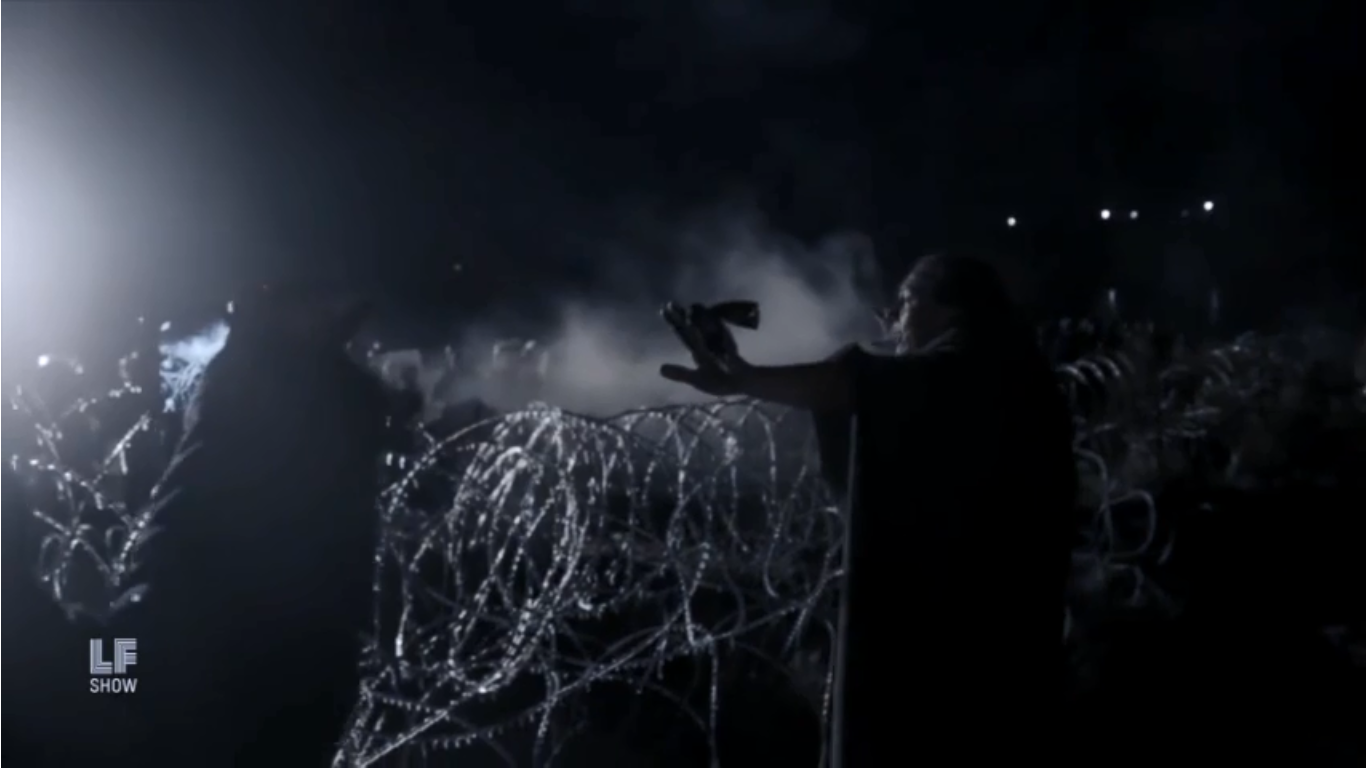There is a recurring image in The Water Protectors of Wakpa Waste — the new documentary about anti-pipeline and extractive energy struggles on the Cheyenne River Sioux Reservation in South Dakota, and the people waging those struggles — that sticks in the mind: small icicles clinging to concertina wire.
 It’s a small detail, even a passing one. Particularly in a documentary filled with startling on-the-ground footage of the brutality inflicted by the U.S. Government on tribal members and allied water protectors, and sobering aerial views of the land beloved by its inhabitants (and rightful “owners,” to whatever degree land can be owned) but treated as little more than a resource by corporatist bureaucrats. But its quiet poeticism lingers — it literally is an image, even in its sad stillness, of the conflict between water and jagged metal, between life and the tools of those who would bend it to their will regardless of the cost.
It’s a small detail, even a passing one. Particularly in a documentary filled with startling on-the-ground footage of the brutality inflicted by the U.S. Government on tribal members and allied water protectors, and sobering aerial views of the land beloved by its inhabitants (and rightful “owners,” to whatever degree land can be owned) but treated as little more than a resource by corporatist bureaucrats. But its quiet poeticism lingers — it literally is an image, even in its sad stillness, of the conflict between water and jagged metal, between life and the tools of those who would bend it to their will regardless of the cost.
The Water Protectors of Wakpa Waste charts that conflict, among others. For some of us, the Dakota Access Pipeline and the dangers it poses — to tribal sovereignty and upheld treaties, to the environment, to ways of life — can seem distant. This is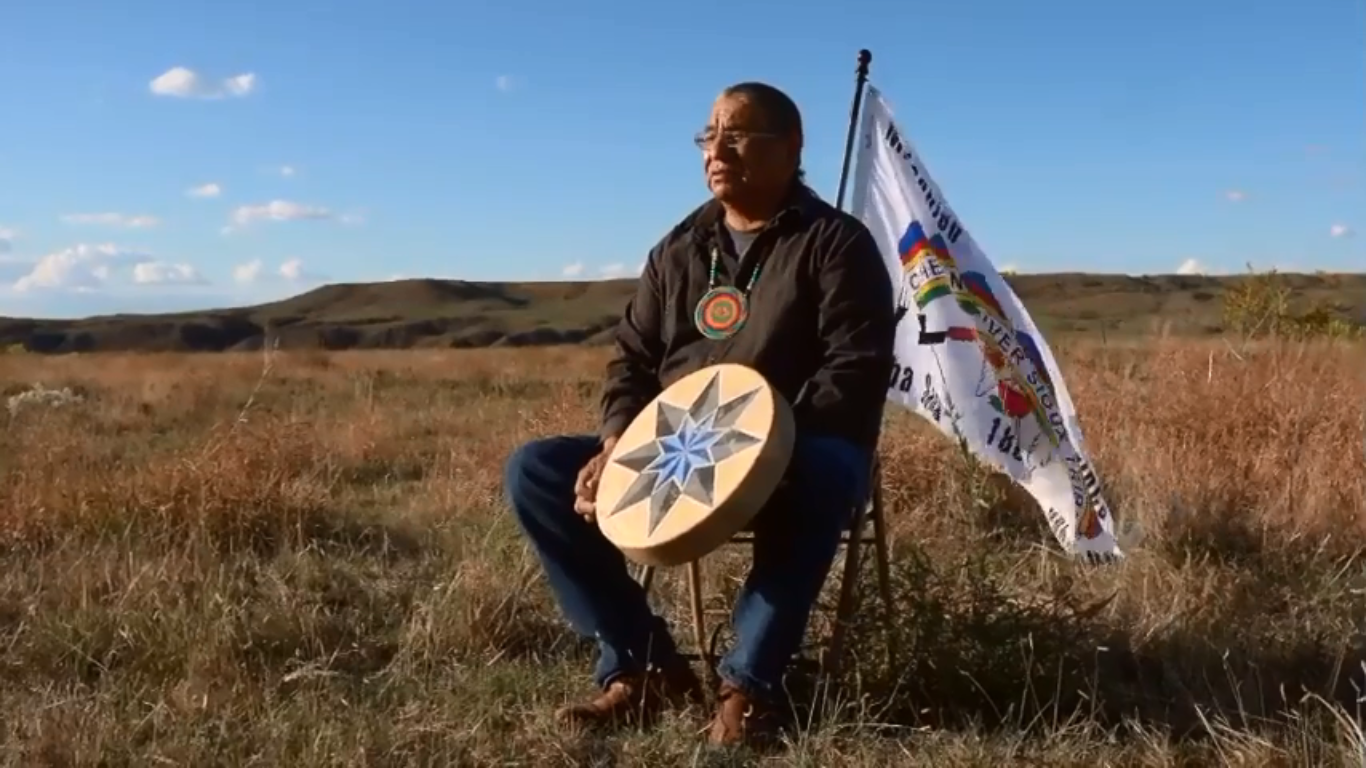 clearly not the case for those most impacted, and the doc takes us into their lives, histories, and demands. Make no mistake, this is an overtly ideological piece of work, intended to inform but primarily to outrage and spur to action. It’s entirely successful on the first count; one hopes the second will follow.
clearly not the case for those most impacted, and the doc takes us into their lives, histories, and demands. Make no mistake, this is an overtly ideological piece of work, intended to inform but primarily to outrage and spur to action. It’s entirely successful on the first count; one hopes the second will follow.
A series of talking heads — filmed, for the most part, outside on location, a smart move — provide the background. More importantly, perhaps, they provide an opportunity to put faces and names to a political movement of water protectors that, far from being over, might just be starting to coalesce. As the Tribe notes,
The fight is not over and there is so much left to do in the Dakota Access Pipeline lawsuit. We are working with experts – biologists, hydrologists, ethnobotanists, eco-toxicologists, and others – to develop proof that the pipeline is unsafe. We have been fighting since August 2016 and we may not be done for years.
The Cheyenne River Sioux Tribe is doing everything it can to protect the waters and the lands that sustain us all. But we don’t have the same endless resources that fund Big Oil and the deep bench of litigators behind the U.S. government.
Water Protectors also doesn’t shy away from some of the internal tensions. A strong segment details the conflicting viewpoints of elders and returning veterans about the best path forward at critical moments, a refreshingly honest self-reflection that steers things away from simple fist-in-the-air polemicism. Any resistance movement is a collection of such tensions; it’s to the film’s credit that they aren’t ignored.
Still, the overwhelming sense is one of solidarity and urgency. There is a dangerous idea, Water Protectors of Wakpa Waste contends, that the struggle is over, and the good guys lost. Nothing could be further from the truth.
Not yet, anyway. Watch, learn, and act.
(Rick – Streaming at https://www.wakpawaste.com/film)
Quick Links
Battles Without Honor and Humanity series (The Yakuza Papers)

As Goodfellas is to The Godfather, the Battles Without Honor and Humanity series (released in the U.S. as The Yakuza Papers) is to countless yakuza movies before it.
Earlier Japanese filmmakers may have made the yakuza seem evil, but Kinji Fukasaku’s 5 films (don’t waste your time with anything after 1974’s Final Episode) make them stupid in a wonderfully energetic way. In no other movie would a yakuza go through the infamous yubitsume procedure (where the penitent crook chops off the end of his pinkie and sends it to the person he is apologizing to), only for it to fly off and land in a chicken coop.
Produced with that breakneck speed that only Japanese film series are capable of—all 5 original films came out in 1973 or 1974, with the “reboot”, New Battles Without Honor or Humanity, coming out just 6 months after the final entry!—it’s a blast and a half. Just accept that you’re going to lose track of the particulars of the plot pretty fast.
(Liz – All streaming on Filmstruck)
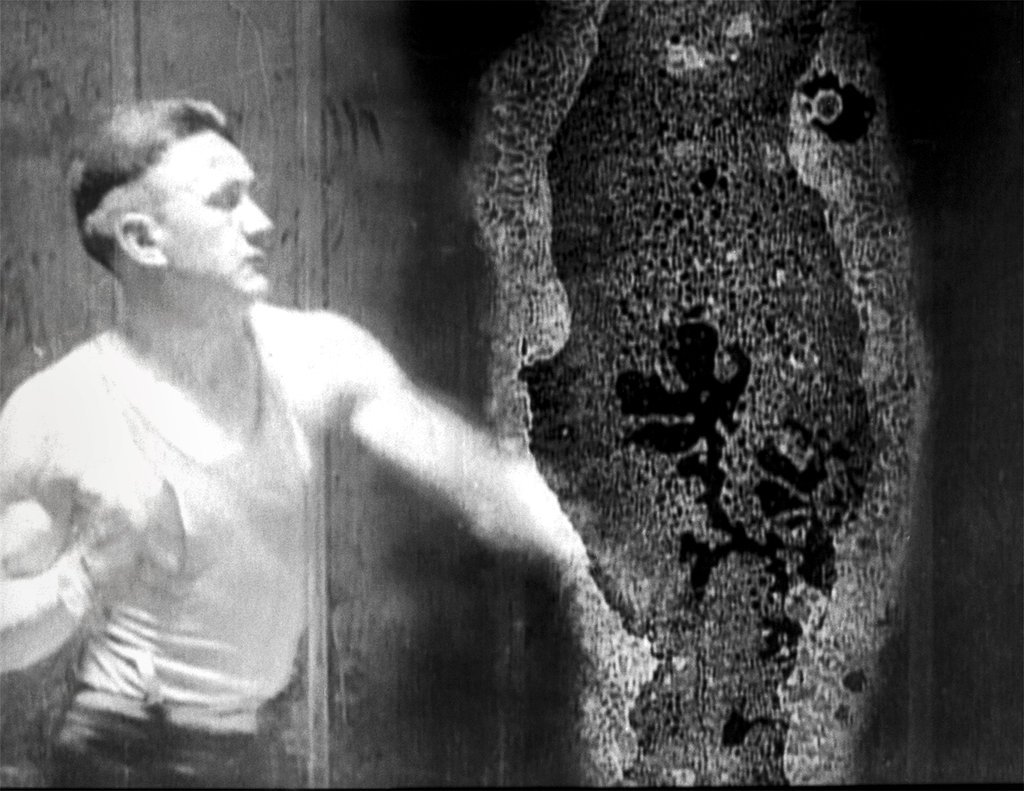
One of the true instant masterpieces of the recent American avant-garde, Bill Morrison‘s 2002 Decasia is unique in form, structure, and content. Composed of the non-linear, non-narrative presentation of decaying nitrate stock, it has a particular appeal to anyone interested in archival excavation, accidental surrealism, and even psychedelia. It’s an entirely different sort of film.
Beginning with current, intact images of film processing equipment, Decasia proceeds across time and place, with Morrison brilliantly editing together unrelated footage he unearthed in various locales. There is a haunting sense of memories lost forever but also a love of the material form and its idiosyncrasies, the new possibilities that destruction allows. Some seem almost impossibly perfect; others seem to be in conversation with each other across decades, linked by the editing, perhaps, but also by their shared impermanence. It’s also trippy as fuck, if that’s your thing.
Morrison’s latest, Dawson City: Frozen Time, is short-listed for an Oscar this year, and it’s available with nearly the entirety of his collected works here.
(Rick – All streaming on Filmstruck)
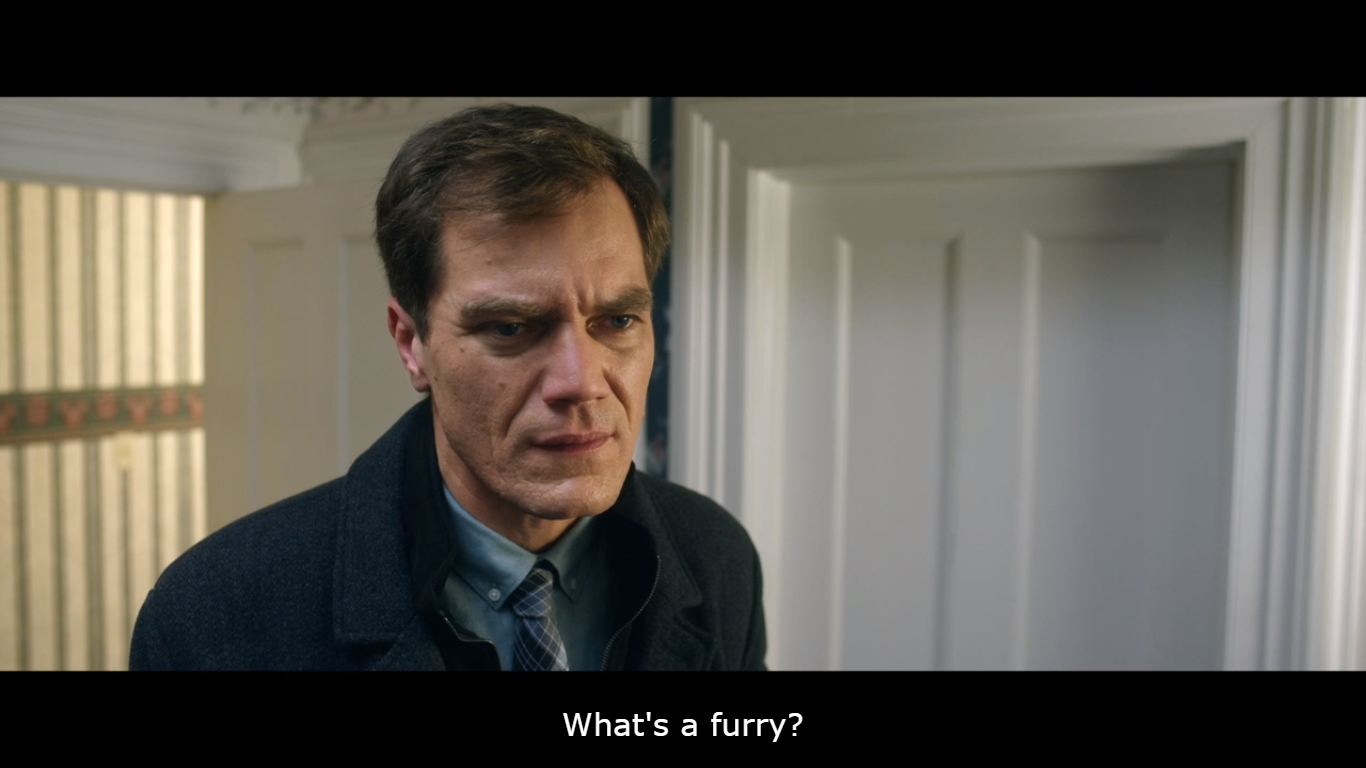
From its mind-blowingly terrible poster art to its suspiciously over-qualified cast, the very existence of Pottersville was greeted as something like a prank. “What is this Christmas movie?” the internet asked. “Why is Michael Shannon smiling and wearing an apron? Is it about It’s A Wonderful Life, given that it’s tagline is ‘It’s A Magical Life’? For the love of God, what is this?”
As word leaked out that it did exist and was a Christmas movie, but specifically one about Bigfoot and small-town furries,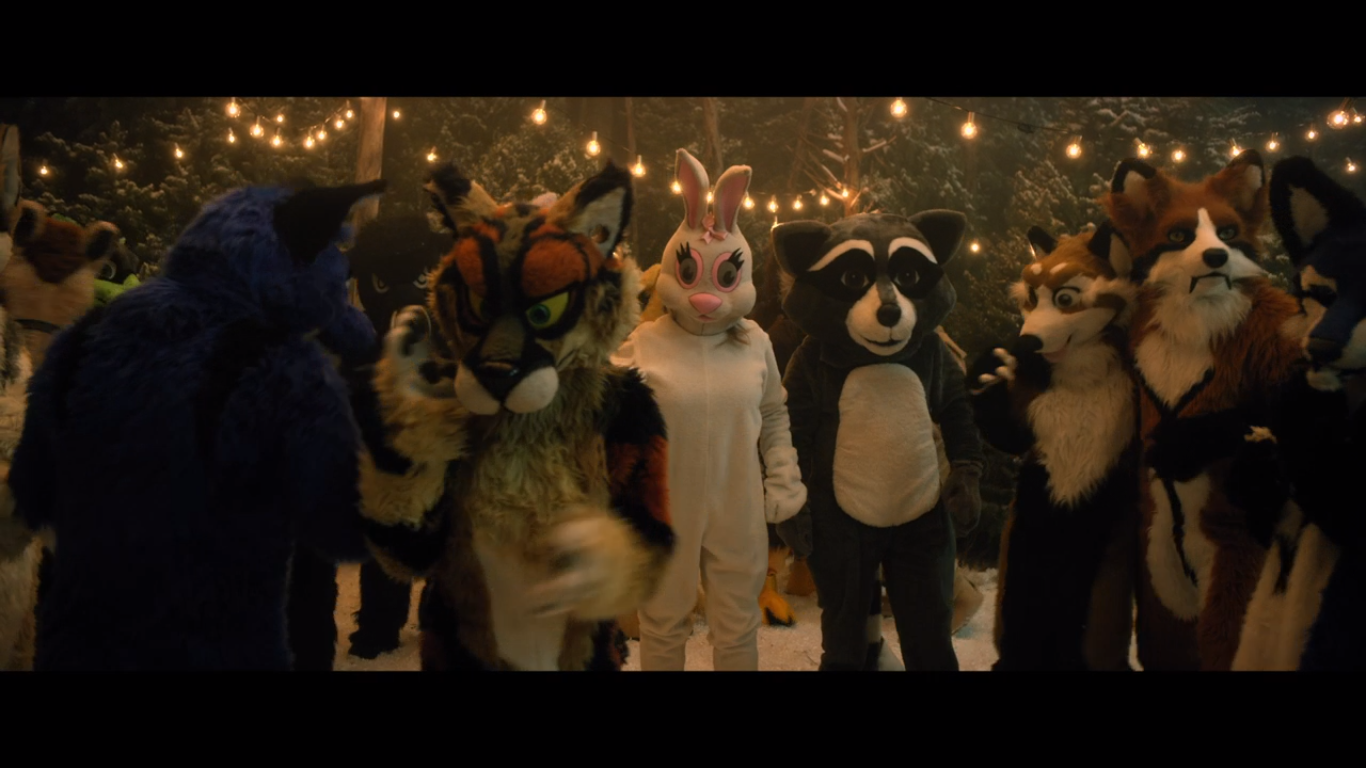 the confusion was not allayed. If anything, this only raised the stakes for Pottersville and for those who relish inscrutable bargain-bin absurdities.
the confusion was not allayed. If anything, this only raised the stakes for Pottersville and for those who relish inscrutable bargain-bin absurdities.
Turns out, it’s neither as good-bad or as bad-bad as these details make it sound. In fact, it’s kind of … sweet? Still terrible, and kind of kink-shaming, and extremely visually flat (Michael Shannon must never smile again; that’s all the smiling the world can allow from Michael Shannon), but, you know, you get what you pay for.
 And if what you want is a furry-themed Christmas movie about fake-Bigfoot and the town he saves through drunken participation in their curiously specific sexual proclivities, Pottersville has you covered.
And if what you want is a furry-themed Christmas movie about fake-Bigfoot and the town he saves through drunken participation in their curiously specific sexual proclivities, Pottersville has you covered.
Also, if you’re wondering whether the great Ron Perlman, who is sleeping with the criminally under-employed Christina Hendrick’s bunny rabbit, gets off in the film on being a wolf, and enjoys making this clear by stating that he is a wolf, then the answer is yes. Yes, he is a wolf.

This micro-genre may have run out of steam (any doubts? check out the final Paranormal Activity movie, a lifeless dead cod of a film that even the absurdity of people watching footage of people watching footage of people watching footage can’t enliven) but its peaks are still electrifying, at least for me. 2007’s [REC] may be the only great foreign found footage movie, a throwback to the pre-Romero zombie movies where the monsters weren’t too well-defined and it’s never clear what the rules are.
I won’t spoil anything for anyone, but it’s also a horror movie that could only be made in a deeply Catholic country—a fact that the sequel, 2009’s [REC] 2, doubles down on in a fascinating way.
(Liz – Both streaming on Shudder)

